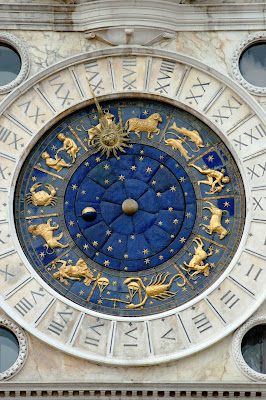there are two versions, one looks as if it might have been sawn in half 'cos the river has no source
this one is in the national museum of norway
their website carries the following text ...
Lucas Cranach the Elder, one of the leading artists of the German Renaissance, was known not least for his nudes. The Golden Age is an outstanding example of such work, which had such a revolutionizing effect north of the Alps. The painting depicts six young, naked couples dancing, bathing, eating, and enjoying themselves in a paradisiacal garden enclosed by a wall.
The painting’s title alludes to the Greek myth of the ideal state that existed during the first Age of Man, before the advent of civilization. The notion of such a Golden Age was first transcribed by the Greek poet Hesiod (eighth century BC) in his didactic poem ”Works and Days”. Hesiod describes the Golden Age as an era when humanity lived a carefree, godlike existence, completely at peace with one another.
A garden replete with flowers, fruit trees, grapevines, and pairs of animals unfolds as a luxurious carpet in front of the viewer, while the extramural landscape is depicted in linear perspective. A rock in the upper left corner is crowned by an impressive fortress; this might be a depiction of Hartenfels Castle, which at the time was the residence of the Ernestine dynasty, one of Cranach’s patrons.
By incorporating this contemporary element, Cranach advances the idea of the Golden Age being born anew, with the Ernestines serving as the mythically sanctioned guarantors of a felicitous reign. Cranach has decorated the naked figures with necklaces of gold. The conventional imagery of the mythical Golden Age is combined with an erotic licentiousness that includes “the Garden of Delight” as an additional theme. A version of this painting can be found in the Alte Pinakothek in Munich.
Text: Nils Ohlsen
and this one is in the Pinakotek in Munich
both paintings were shown at an exhibition in the royal academy ... here is some of their text ...
Although Cranach may have taken some details of his two pictures of the Golden Age (one in Oslo, one in Munich) from Virgil`s Fourth Bucolic, his depiction of it is also that of the medieval Boethius: "They sleep wholesome sleeps on the grass and lie under the high pine-trees`. The paintings are touched with that regard for the simplicity of childhood, so prevailing in Cranach`s works, which is partly religious in nature, the child being (in the words of Bishop Earle`s Microcosmographie of 1628) `the best copie of Adam before he tasted of Eve or the apple`. At least that is the assumption Cranach starts from. One must allow for the worldliness of which his innocence is the ultimate and paradoxical expression.In his vision of the Golden Age the sixteenth century is only walled out. The wall of its pleasure garden - its locus amoenus - can easily be climbed from the hillside into which it is built. Pine-trees, steeple-tips and belfries appear over it. Deer graze among the daisies, the pinks and the dog-roses. Distant crags are immersed in the blue air. An almost metallic duskiness settles on the not quite ripe fruit on the apple-trees and plum-bushes. The deers` pelts are russet dappled with near silver. A brood of partridges is woven into the dense pasture presided over by a pair of playful lions. The picture is suffused with correspondences between Humanity and Nature: curl of water and fluidity of blonde locks; strands of bright hair caught in leafy branches and entwisted in deep grass. A sward tressed with wild flowers is figured in relief against the bare feet and reclining bodies of revellers.The revellers have dreaming eyes, except for one rogue philanderer who slips his arm round a female dreamer, and by way of diversion offers her a bunch of grapes. One bather splashes another in a reverie as they bathe in a spring spouting from lichened rocks. There are both actives and contemplatives present. Two contemplatives lie on the grass: a story-teller in lank repose, and his fair audience, her gold chain falling negligently to one side. The actives dance, the abrupt rhythm of the men counterpoised by the drifting suppleness of the women; the women, indeed, almost static, pausing on one foot, and arresting the men`s precipitation; one woman resisting the male impetus with all the muscularly coiled pulchritude of her small back. Movement can only be hinted at in painting. Cranach deftly uses the women`s pauses to suggest that the dance will soon resume.He does not pretend that his Golden Age is more than a daydream of innocence in the present. Men in their prime and nubile maidens dance round a tree on which Eve`s apples ripen. For all their nudity the maidens have not thrown off their gold chains and necklaces, and have not unbound their subtly braided hair. They have rejected luxury but not their shining toys.






































































































































































































































